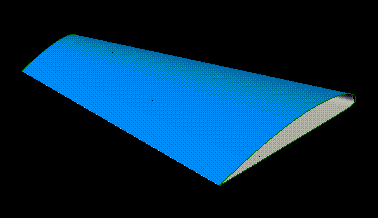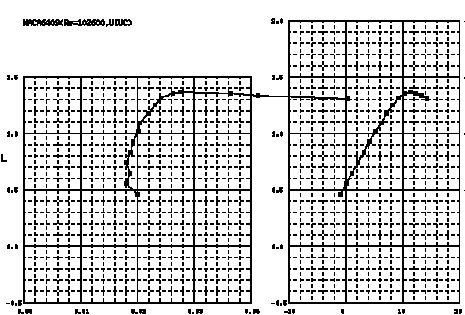
Of course another complication is judging what reference area to use for that term. 031 so I'd say Prandtl's Lifting line equations are closer using Cdmin and Cdi, but I still don't see a parasitic (skin friction) drag term there. On they have a list of Cdmin's for different airplanes and those range from about. Yeah, the 2D drag curve, especially at cruise (min drag) gives a Cd of around. The AR sometimes seems hard to find as manufacturers rarely list it but it can also be found by AR = b^2/S (b-wingspan, S-surface area), which manufacturers always list. Sorry, different abbreviation, Airspeed (A/S), Aspect Ratio (AR).
#3d airfoil generator how to
RE: How to relate 2D airfoil Cd to 3D wing Cd rb1957 (Aerospace) 24 Oct 06 17:21 My guess is that it would be a factor times the CDmin, and that factor would be based on (V-Vmin)^2/Vmin, where Vmin is the velocity for best L/D, which is usually best power off glide speed.
#3d airfoil generator skin
But how do you separate the skin friction portion from the initial CDmin? Surely there is skin friction buried in the CDmin? And I've seen the graphs of skin friction drag, it goes up parabolically with A/S. That all sounds good, but what I can't rationalize out is how do we factor in the skin friction (parasitic) drag. Adding that to the induced drag gives a totat drag factor, and from that and knowing thrust (see the discussion I listed above about finding thrust), we should be able to find the calculated max A/S. We have to know what the experimental results are for the CDmin.

If we plug that into the lifting line theory we can come up with an induced drag factor. say 300 knots and we definitely know the weight (say max gross weight of A/C), then we can work it backwards to solve for the actual max speed CL. If we make a guess and say that the max airspeed will be about. In other words what can we actually do with the wonderful numbers charted in "Theory of Wing Sections" and any other CL vs AoA or Cd vs CL graphs? RE: How to relate 2D airfoil Cd to 3D wing Cd Guest0527211403 (Mechanical) 22 Oct 06 21:45Īctually, I came up with something that involves a little bit of intuition. I also know from Lifting Line theory that Cd=Cdmin +(CL^2/pi x AR x e-Oswald's efficiency factor), but you see that that formula doesn't make any use of the 2D value for Cd from the charts-the only thing it relates to again is the CL vs alpha slope. I know that I can estimate the 3D CL from Prandtl's Lifting Line theory CL=CLalpha x (AR/AR+2) x alpha and that at least uses the slope of the CL vs alpha line and the alpha at the stall speed for that airfoil. We went to a lot of trouble picking out the CL's and Cd's of the airfoils used by reading off the graphs in the "Theory of Wing Sections", but now I can't find any way of relating those CL's, Cd's to 3D values.

Hi, I'm trying to help my teenage daughter with a science project where we take 2D airfoil lift and drag curves and relate them to to the actual wings of real airplanes and see how close we can calculate stall speed and max speeds of the real world airplanes.


 0 kommentar(er)
0 kommentar(er)
